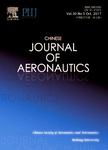Numerical study on ignition start-up process of an underwater solid rocket motor across a wide depth range
作者机构:School of Aerospace EngineeringBeijing Institute of TechnologyBeijing 100081China Beijing System Design Institute of Electro-mechanic EngineeringBeijing 100854China
出 版 物:《Chinese Journal of Aeronautics》 (中国航空学报(英文版))
年 卷 期:2024年第37卷第10期
页 面:136-157页
核心收录:
学科分类:080704[工学-流体机械及工程] 080103[工学-流体力学] 08[工学] 0807[工学-动力工程及工程热物理] 0801[工学-力学(可授工学、理学学位)]
基 金:This study was supported by the National Level Project of China
主 题:Underwater propulsion Solid rocket motor Ignition start-up process Underwater gas jet Thrust oscillation
摘 要:Solid rocket motors have important applications in the propulsion of trans-media vehicles and underwater launched *** this paper,the ignition start-up process of an underwater solid rocket motor across a wide depth range has been numerically studied.A novel multi-domain integrated model has been developed by combining the solid propellant ignition and combustion model with the volume of fluid multiphase *** integrated model enables the coupled simulation of the propellant combustion and gas flow inside the motor,along with the gas jet evolution in the external water *** detailed flow field developments in the combustion chamber,nozzle,and wake field are carefully *** variation rules of the internal ballistics and thrust performance are also *** effects of environmental medium and operating depth on the ignition start-up process are systematically *** results show that the influence of the operating environment on the internal ballistic characteristics is primarily reflected in the initial period after the nozzle closure *** development of the gas jet in water lags significantly compared with that in *** the water depth increases,the ignition delay time of the motor is shortened,and the morphology evolution of the gas jet is significantly compressed and ***,the necking and bulging of the jet boundary near the nozzle outlet and the consequent shock oscillations are intensified,resulting in stronger fluctuations in the wake pressure field and motor thrust.



